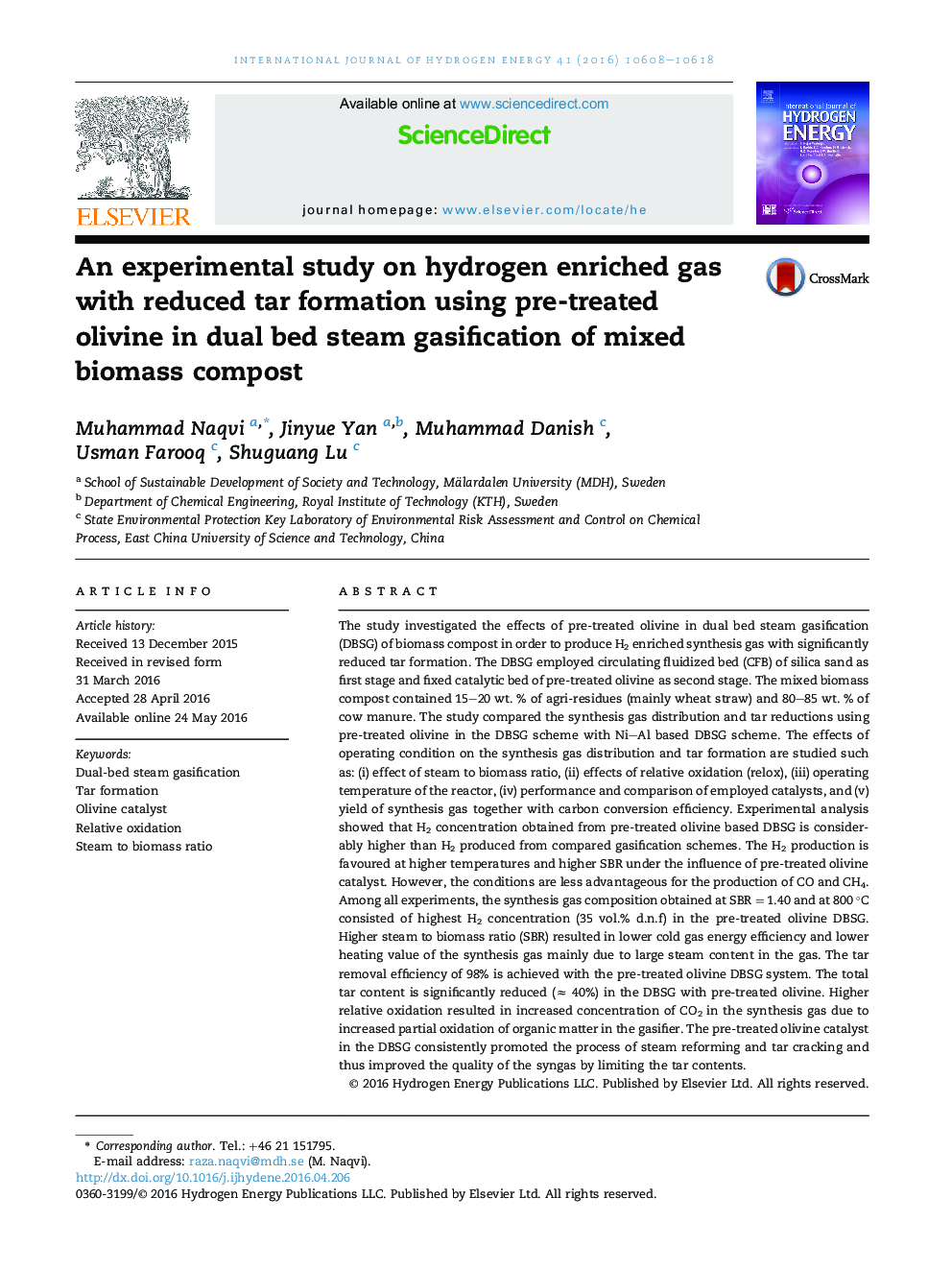| کد مقاله | کد نشریه | سال انتشار | مقاله انگلیسی | نسخه تمام متن |
|---|---|---|---|---|
| 1276786 | 1497400 | 2016 | 11 صفحه PDF | دانلود رایگان |
• Experimental study on dual bed steam gasification (DBSG) for H2-enriched gas.
• First stage of silica sand CFB for pyrolysis and second stage of fixed pre-treated olivine bed for gasification.
• H2 from pre-treated olivine gasification was higher than Ni–Al based gasification.
• H2 content of 35 vol.% was achieved with a tar removal efficiency of 98%.
• Reduction in tar-C (>15 wt.%) in olivine DBSG than CFB gasification with silica sand.
The study investigated the effects of pre-treated olivine in dual bed steam gasification (DBSG) of biomass compost in order to produce H2 enriched synthesis gas with significantly reduced tar formation. The DBSG employed circulating fluidized bed (CFB) of silica sand as first stage and fixed catalytic bed of pre-treated olivine as second stage. The mixed biomass compost contained 15–20 wt. % of agri-residues (mainly wheat straw) and 80–85 wt. % of cow manure. The study compared the synthesis gas distribution and tar reductions using pre-treated olivine in the DBSG scheme with Ni–Al based DBSG scheme. The effects of operating condition on the synthesis gas distribution and tar formation are studied such as: (i) effect of steam to biomass ratio, (ii) effects of relative oxidation (relox), (iii) operating temperature of the reactor, (iv) performance and comparison of employed catalysts, and (v) yield of synthesis gas together with carbon conversion efficiency. Experimental analysis showed that H2 concentration obtained from pre-treated olivine based DBSG is considerably higher than H2 produced from compared gasification schemes. The H2 production is favoured at higher temperatures and higher SBR under the influence of pre-treated olivine catalyst. However, the conditions are less advantageous for the production of CO and CH4. Among all experiments, the synthesis gas composition obtained at SBR = 1.40 and at 800 °C consisted of highest H2 concentration (35 vol.% d.n.f) in the pre-treated olivine DBSG. Higher steam to biomass ratio (SBR) resulted in lower cold gas energy efficiency and lower heating value of the synthesis gas mainly due to large steam content in the gas. The tar removal efficiency of 98% is achieved with the pre-treated olivine DBSG system. The total tar content is significantly reduced (≈ 40%) in the DBSG with pre-treated olivine. Higher relative oxidation resulted in increased concentration of CO2 in the synthesis gas due to increased partial oxidation of organic matter in the gasifier. The pre-treated olivine catalyst in the DBSG consistently promoted the process of steam reforming and tar cracking and thus improved the quality of the syngas by limiting the tar contents.
Journal: International Journal of Hydrogen Energy - Volume 41, Issue 25, 6 July 2016, Pages 10608–10618
